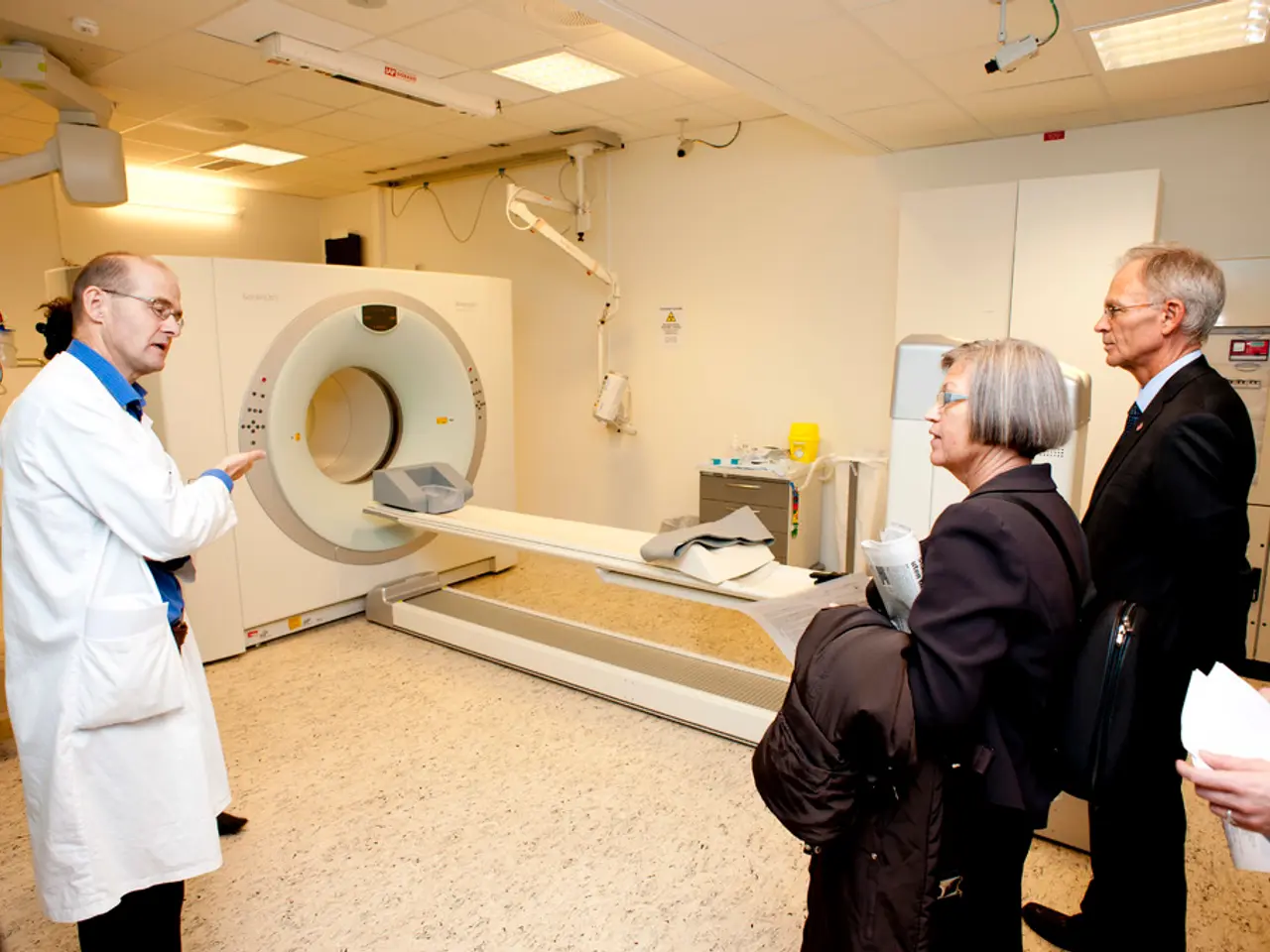NHS revolutionized through innovative onsite medical diagnostics
The National Health Service (NHS) in the UK is embarking on a significant shift towards digitally enabled diagnostics, with the aim of improving access to timely and accurate diagnoses. According to recent RCR research, 67% of cancer patients began treatment late in 2024, highlighting the need for change.
Under Starmer's leadership, the NHS is moving towards a more digital future. However, challenges lie ahead. For instance, there is a 30% dearth in radiologists in the NHS, as estimated by the British Medical Association (BMA).
Frontline diagnostics, such as point-of-care testing (PoCT) devices, offer a pathway forward. These tools allow clinicians to make faster, evidence-based decisions, thus reducing diagnostic uncertainty and accelerating appropriate treatment. Implementing decentralized, digital frontline diagnostics in the UK's NHS offers significant benefits.
Improved access and timeliness are key advantages. Decentralized digital diagnostics enable testing closer to patients, reducing delays inherent to centralized labs and facilitating immediate clinical or behavioural decisions. Scalability and responsiveness are also benefits, with platforms like NOUL’s AI-powered miLab™ illustrating how automation and decentralization can address rising diagnostic demand and infrastructure complexity within the NHS.
Enhanced data capture for public health is another advantage. Real-time digital reporting from decentralized tests supports epidemiological monitoring and rapid outbreak response. These benefits align with the NHS's strategic shifts, such as the 10-Year Plan, which supports a decentralised care model with Neighbourhood Health Centres offering integrated diagnostics in local settings.
However, challenges remain. Integrating new diagnostic platforms with existing NHS Electronic Health Records (EHRs) requires adherence to standards such as FHIR and overcoming entrenched data silos. Ensuring consistent diagnostic accuracy and compliance across decentralized settings, potentially with less direct clinician oversight, is complex. Protecting patient data privacy and securing test result transmission in a highly distributed environment require robust cybersecurity measures.
Long-term funding models must support manufacturing capacity, maintenance, training, and digital infrastructure critical for continuous operation beyond initial implementation phases. A unified approach is required for agile, innovation-friendly procurement in the NHS.
As of April 2025, 7.39 million people were still waiting for treatment in the NHS, and 97% of clinical directors across the entire NHS report concern among staff shortages causing backlogs, delays, and risks to patient safety. Investment is needed not only in diagnostic devices but also in the cloud, cybersecurity measures, and connectivity foundations that support them.
The transformation towards digitally enabled diagnostics won't happen overnight but offers the opportunity to get people out of hospital corridors and into real beds, even at home. The future of UK healthcare needs to think outside the traditional box to save the NHS and ensure its survival. The use of certain diagnostic tests, like C-reactive protein (CRP) testing, can save £3,914 per patient per year and reduce unnecessary antibiotic prescriptions by 60%.
As the NHS delivers 2.4 million diagnostic tests in April 2025, an 8.25% increase compared to the same month the previous year, it is clear that progress is being made. Clinicians, carers, and community health professionals need training to confidently use and interpret new diagnostic solutions. The road to a more digitally enabled NHS is long, but the benefits are clear.
Science and medical-conditions are intertwined in the context of digital diagnostics, as the NHS's aim to improve access to accurate diagnoses will rely heavily on the advancements in this field. The implementation of decentralized, digital frontline diagnostics, such as point-of-care testing devices, can facilitate quicker, evidence-based decisions regarding health-and-wellness, potentially reducing diagnostic uncertainty and streamlining appropriate treatment.
Implementing digital diagnostics within the NHS presents various challenges, including integrating new platforms with existing Electronic Health Records, ensuring diagnostic accuracy across decentralized settings, and securing patient data privacy in a highly distributed environment. Overcoming these challenges is essential to leveraging the benefits of digital diagnostics, including improved access, timeliness, scalability, responsiveness, and enhanced data capture for public health purposes.




